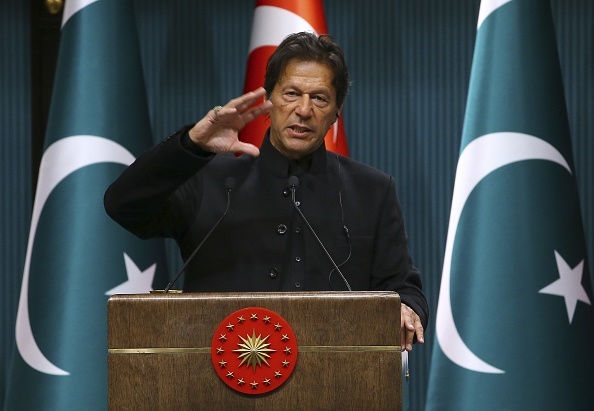
This is the second of a three-part series.
Read the first instalment here.
- Given the current global turmoil, it is all the timelier to ask: "What will world politics and economics look like by 2030?"
- Will the dominant narratives still be the interlocking realms of free market capitalism and liberal democracy?
- Could 2030's political and economic menus offer new options for the nations of tomorrow's world to follow?
- Which options might be most popular?
- By 2030, could there even be more favoured alternatives to today's made-in-the-West duo?
-------
In assessing the emerging political and economic rivals to the old 'We' world's duo, one must consider the systems of China which, by the mid-2020s, will likely have the world's largest nominal GDP, even if the crown of being the world's most populous country will soon be worn by Asia's other giant, India. (As historian Yuval Harari has noted, Covid-19 will fast-forward history: many of the predictions I made as happening by 2030 – on China's rise, yes, but very much in other fields too – will now happen in 5 years rather than 10.)
I use the neutral phrases 'state-directed capitalism' and 'administrative centralism' to define China's economic and political systems. As with the West's duo, these concepts are fluid and will evolve in form throughout the 2020s.
What works about the system as exemplified by China?
Since 1980, average Chinese livelihoods have improved to a degree and scale and at a speed unmatched in human history: in the 40 years to 2020, Chinese GDP per capita rose 35 times; in the US, it rose five times; in the UK, 4 times. And most Chinese believe their political circumstances have also improved, in particular aided by the liberating features of mobile phones.
The 'We' elite who cavil "So what? China still falls short of OUR politics and economics" miss the point. What matters to China's population is the scale of the improvement in their lives more than the level achieved. This radical transformation has created a forward momentum most Chinese believe flows from pursuing their nation's own distinct economic and political model. Whilst frustrations undoubtedly exist and are even growing, still few citizens appear to want to deviate too far from China's chosen economic and political paths.
Leveraged by the big number logic of 1.4 billion nationals, this growth momentum will see China's economy surpass the United States before long. Sure, the US's GDP per capita will still dwarf China's, but the US only ranks 7th in this regard today. The 2020s will be the decade not of MAGA – Make America Great Again – but MCGA – Make China Great Again.
China's renaissance has vastly improved its average citizen's quality of life: longer life expectancy; falling infant mortality; better diet; warmer houses; vastly improved services in health, education, communication and transport. A more polluted environment is the greatest negative externality.
The 'We' elite miss what non-Westerners note. The refrain heard throughout Asia and Africa today is: "If China can do it, why not us? And if some of us choose to follow China's path of state-directed capitalism twinned with administrative centralism, so be it." That China's model has generated plentiful jobs for the poor especially attracts prospective emulators. As Oxford-educated Imran Khan, Pakistan's Prime Minister, said in Davos this year: "Better to develop like China which proved that, if you raise the standard from the bottom, the whole nation thrives."
Pakistani Prime Minister Imran Khan. Photo by Halil Sagirkaya/Anadolu Agency/Getty Images
China's economic renaissance will, after absorbing the Covid-19 hit, broadly continue throughout the 2020s, albeit at a lower and slower trajectory. Their demographic trends – more on this below – will pay dividends for the rest of this decade as their relevant metrics are not yet centred on population growth nor even its shape but rather the annual number of rural to urban migrants: from adding little value on farms to more value in towns. This migration – in effect a form of immigration much like that experienced by the United States from 1880 to 1914 – will continue at 10 to 15 million people per annum until 2030. (To attract these immigrants, China is promoting, via land reform and more relaxed hukou restrictions, the development of five 'smart' supercities: Yangtze River Delta; Jing-Jin-Ji Area; Greater Bay Area; Mid-Yangtze River Area; Chengdu-Chongqing Area. These cities will pioneer the extensive application of big data technologies to urban areas.)
The productivity debate
Productivity is one of economics' most debated terms. As a key driver of economic growth, average wages are a fair but far-from-perfect money-based proxy. GDP then derives from demography-linked hours worked multiplied by productivity-linked average hourly wage earned. When a laggard economy pursues a more developed one and the follower's like-for-like wages are lower, relative productivity gains are all but guaranteed. Of course, Vietnam, Bangladesh and Ethiopia are now doing 'a China on China'. Nevertheless, expect continued productivity gains in China as it moves up the global value-added chain, outproducing industrial powerhouses like higher cost Germany and Japan, whilst still becoming more consumer-driven and service-oriented. Though not matching post-2000 rates, the coming decade's gains in Chinese productivity will easily outrun the West's.
Demographic dividends from China's rural-urban migration combined with ongoing productivity gains will generate meaningful GDP growth throughout the 2020s. But China's GDP growth rates will not match those it achieved post-1980 even as they exceed Western trends. Any inflation higher than the US or Renminbi appreciation versus the US Dollar will further enlarge China's nominal US Dollar GDP.
By 2030, when China's urbanisation rate nears 75% (seen as close to 'saturation'), the negative demographic fall-out from China's 1978-2015 One Child Policy will assert itself, exerting a profound drag on Chinese growth. China's back-up plan – the 'One Belt One Road' vision – whilst not filling this gap 1-for-1, will at least blunt it. By raising China's commercial umbrella over Asia and Africa, China will graft China Inc onto the two continents with the world's best demographic and productivity growth prospects. Unable to offset their own demographic and productivity slowdowns, China Inc will piggyback upon someone else's.
Chinese government strategic decision-making occurs rapidly with implementation immediate: a Wuhan hospital was recently built in six days. This capacity has rejuvenated national infrastructure inside a generation. The NDRC approved Beijing's Daxing Airport on 22 December 2014; construction began four days later; it opened in 2019. Heathrow's third runway was proposed in 2003 but is still unapproved.
Addressing climate change is receiving the same superfast attention: China leads in renewable energy production and consumption and, importantly, the equipment manufacture required to generate that renewable energy.
China's official sponsorship of research and development has achieved breakthroughs in multiple fields. R&D World estimates US 2020 R&D expenditure will total $610bn, up 2.2% on 2019; China's will total $564bn, up 5.8% on 2019. At these growth rates, China's R&D will overtake the US's in 2023. The results are self-evident: in 2019, the number of Chinese unicorns exceeded American unicorns, 206 to 203. China's national blueprint – Made in China 2025 – has been quietly upgraded to Invented, Developed and Made in China 2025.
Finally, before singing the Old World's default 'We' anthem that China's economy is still state-dominated, note its private sector contributes 50% of government tax revenues, 60% of GDP, 70% of technological innovations, 80% of urban employment and makes up 90% total companies. China's economy may still be state-directed but it is no longer majority state-owned.
Grasping the full scale of Asia's transformation also means recognising ABC – Asia Beyond China – where China is but one of the driving forces. Two of ABC's other drivers include:
Firstly, ABC's demographic outlook vastly outranks China's and not merely because it includes India. An adjusted prism for viewing the wider region's demographics adds the Indian Ocean Basin. In accessing fast growing Eastern Africa's 300 million people, a two billion-strong Asian-African market emerges, thereby underpinning OBOR's logic.
Secondly, largely because ABC's labour costs undercut China's, Harvard's Growth Lab expects ABC to achieve high productivity growth. Together with ABC's better demographics, this portends higher GDP growth.
Combined, China and ABC will see their middle classes explode in the 2020s. Between 2015 and 2030, the Brookings Institute forecast global middle classes to rise by 1.6 billion. Of this, 93% or 1.5 billion will happen in wider Asia. By comparison, Brookings foresee North America's middle classes declining 11 million and Europe's declining 23 million.
The political and economic changes Ninety One expects in the 2020s largely contrast Old World failings with New World successes. And whilst the Old World will have successes and the New World failings, Ninety One forecasts the overall aggregation will massively favour the New World.
Michael Power is global strategist for Ninety One. Views expressed are his own.




 Publications
Publications
 Partners
Partners












